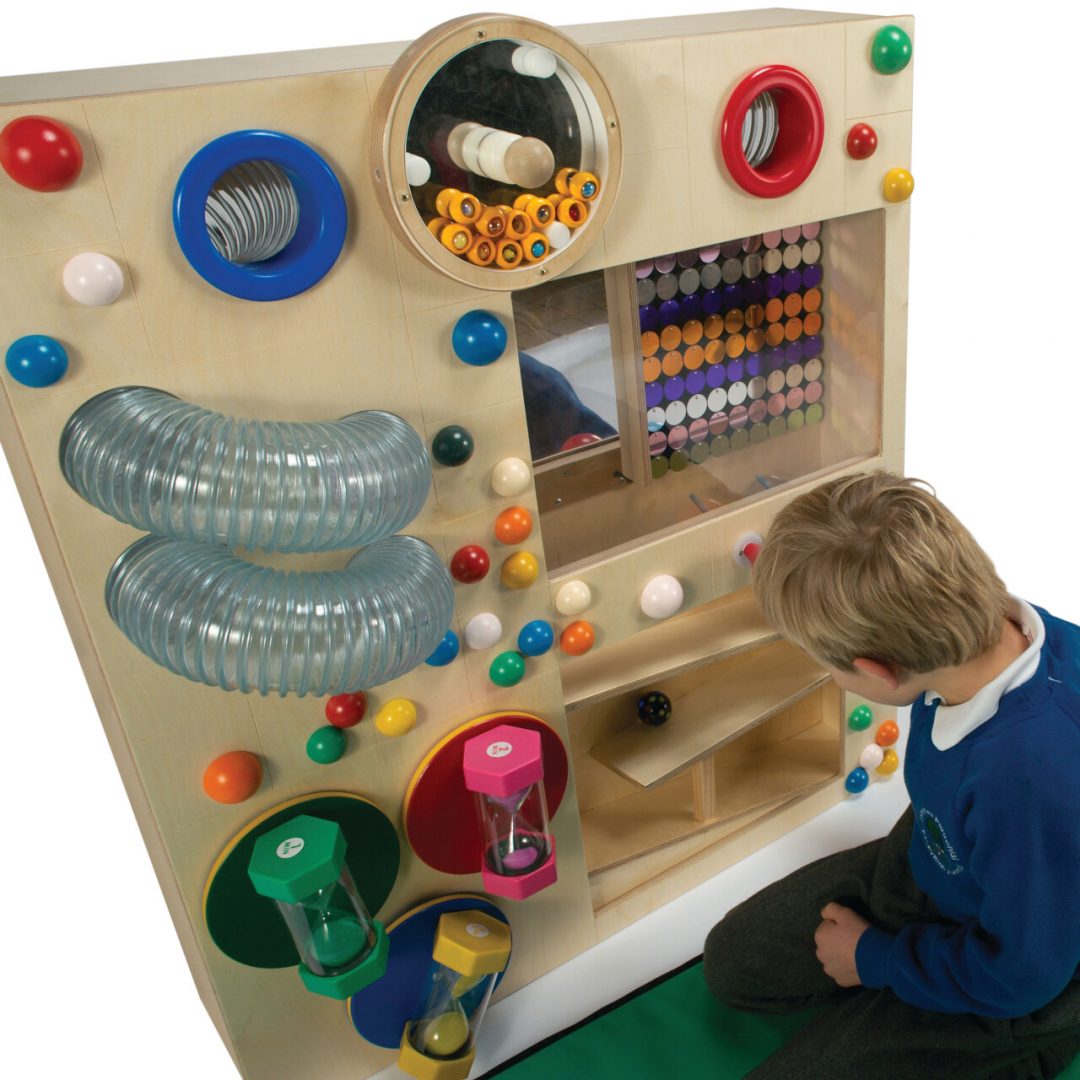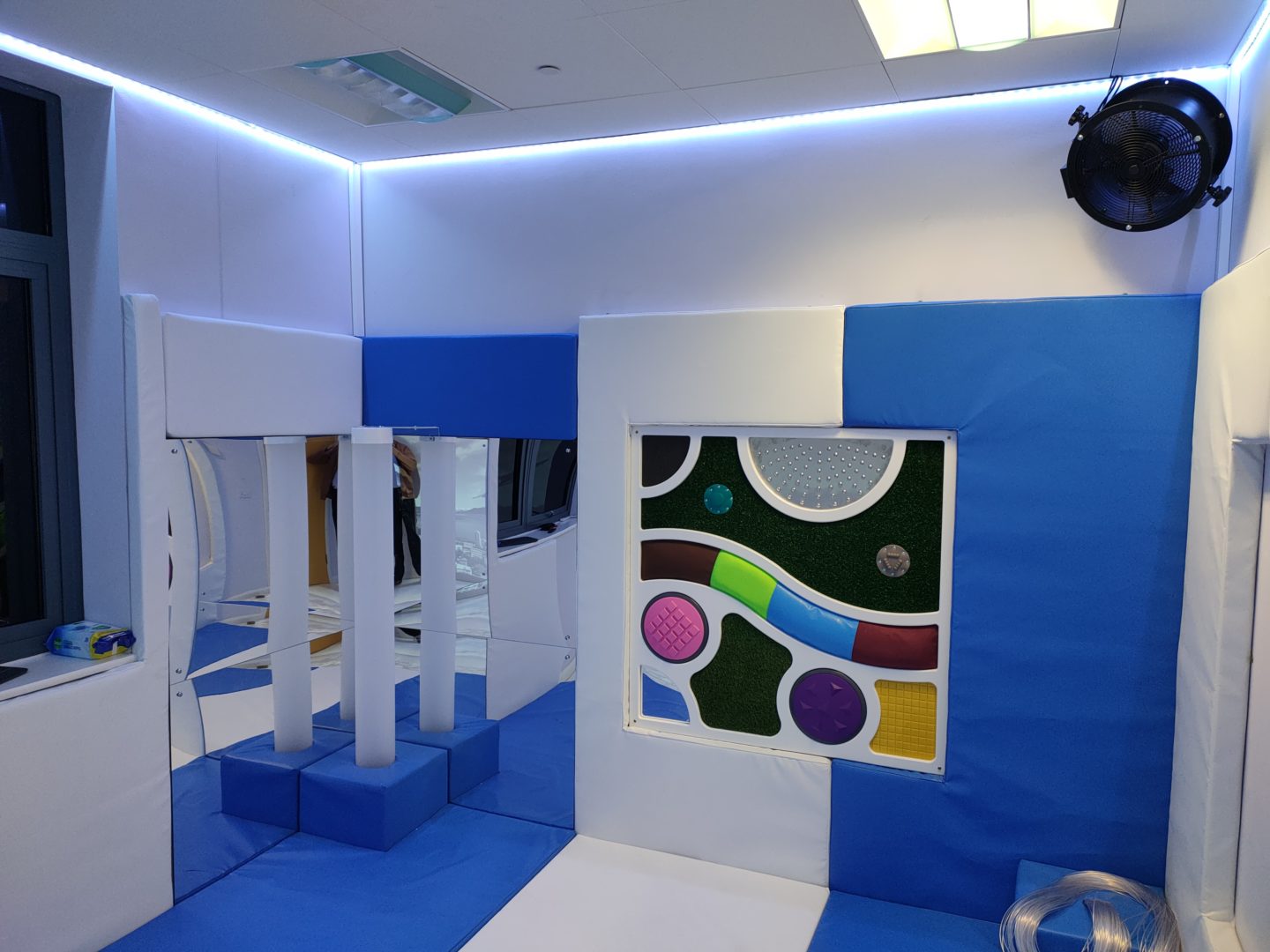
Tactile Stimulation for ADHD

Textured Wonder Wall

Tactile Stimulation for Autism
First, it encourages sensory exploration. Tactile stimulation promotes the exploration of various textures, which aids in sensory integration. This exploration helps individuals with autism become more comfortable with different sensory experiences and adapt better to changes in their environment.
Additionally, it reduces stress and sensory overload. By providing calming and predictable sensory input, tactile stimulation can help prevent or reduce the frequency of stress and meltdowns. Engaging with soothing textures can offer a sensory break and a sense of security.
Furthermore, it enhances play and social interaction. Tactile toys and activities can make playtime more engaging and enjoyable. These activities often facilitate social interaction and shared experiences, encouraging more positive social behaviour and interaction with peers.
Overall, tactile stimulation offers numerous benefits for individuals with autism, supporting sensory exploration, reducing stress, and enhancing social interactions.

Gravity Wonder Wall Station
Our Gravity Wonder Wall has a range of different features, including 2 tube tracks, 3 secure hourglasses, a glitter wall, and a marble wheel. Moreover, it is designed so you can get all the tactile stimulation that you need whilst having fun. Additionally, Gravity Wonder Wall is also great for visual sensory input and the development of fine motor skills. Furthermore, Gravity Wonder Wall will ensure you have a fun-filled time, and with many different activities, you can even play with a friend. Ultimately, it is perfect for a multi-sensory room or installed in a care facility for those living with dementia.

Tactile Stimulation for Dementia
Wall panels that provide tactile stimulation can be especially beneficial for individuals living with dementia. Here’s how they help:
First, they promote sensory memory. Tactile experiences can trigger sensory memories and associations from the past. For individuals with dementia, familiar textures or patterns can evoke positive memories and stimulate recognition, contributing to a sense of connection and continuity.
Additionally, they provide a safe outlet for restlessness. The interactive nature of tactile panels offers a constructive outlet for restlessness or fidgeting. Engaging with tactile elements can help manage restless behaviours and offer a calming distraction.
Moreover, they support social interaction. Tactile stimulation wall panels can be used in group settings to encourage social interaction. Shared experiences with tactile elements can foster communication and create opportunities for meaningful social connections.
Furthermore, they enhance environmental familiarity. Wall panels with various textures and interactive elements can make an environment more engaging and less intimidating. Familiar or pleasant tactile experiences can help create a comforting and reassuring space, providing meaningful activities for dementia patients.
Overall, tactile stimulation wall panels are a valuable tool for enhancing the well-being of individuals with dementia by promoting sensory memory, providing a safe outlet for restlessness, supporting social interaction, and enhancing environmental familiarity.

Sensory Kinetic Toy Wall
Contact us today to learn more about our Tactile Stimulation range and how they can enhance the lives of your service users.